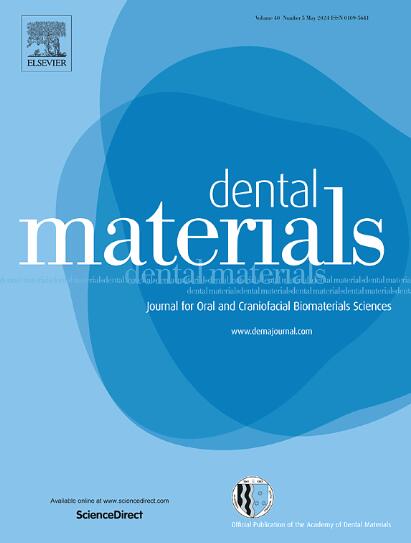铣床具有优越的机械性能比其他制造方法的PMMA义齿基托:一个系统的回顾和网络荟萃分析。
IF 4.6
1区 医学
Q1 DENTISTRY, ORAL SURGERY & MEDICINE
引用次数: 0
摘要
目的:本系统综述和网络荟萃分析旨在通过评估不同的PMMA(聚甲基丙烯酸甲酯)全口义齿基托制造技术的机械性能来比较它们。目的是确定哪种方法-压缩成型,注塑成型,铣削或3D打印-提供最佳性能。资料:在体外研究PMMA义齿基托树脂的力学性能。来源:四个电子数据库,如PubMed, Embase, Web of Science和Cochrane Library,筛选英文文章。两名独立研究人员选择研究,提取数据,评估偏倚风险,并评估证据确定性。结果:电子数据库共检索到文献17152篇。最后,对63项研究进行分析,采用随机效应模型进行网络元分析。研究结果包括抗弯强度、抗弯模量、表面粗糙度、冲击强度和维氏硬度。铣削在结果上一直排名第一或第二,在抗弯强度、模量和表面粗糙度方面表现出色。相比之下,3d打印的义齿基托表现出最低的机械性能,突出了目前该技术的局限性。结论:由于PMMA义齿基托在大多数结果中具有优越的机械性能,因此通常推荐使用铣床,支持其在临床环境中的使用。然而,3d打印PMMA义齿基托虽然前景广阔,但需要进一步改进才能达到临床性能标准。本文章由计算机程序翻译,如有差异,请以英文原文为准。
Milling has superior mechanical properties to other fabrication methods for PMMA denture bases: A systematic review and network meta-analysis
Objectives
This systematic review and network meta-analysis aimed to compare different PMMA (polymethyl methacrylate) complete denture base manufacturing techniques by evaluating their mechanical properties. The objective was to determine which method—compression molding, injection molding, milling, or 3D printing—offers the best performance.
Data
In vitro studies investigating mechanical properties of PMMA denture base resins.
Sources
Four electronic databases such as PubMed, Embase, Web of Science, and the Cochrane Library were screened for English language articles. Two independent researchers selected studies, extracted data, assessed risk of bias, and evaluated evidence certainty.
Results
A total of 17152 articles were found by electronic databases. Finally, 63 studies were analyzed, using random-effects model for network meta-analysis. The outcomes investigated were flexural strength, flexural modulus, surface roughness, impact strength, and Vickers hardness. Milling consistently ranked first or second across outcomes, excelling in flexural strength, modulus, and surface roughness. In contrast, 3D-printed denture bases demonstrated the lowest mechanical performance, highlighting the limitations of this technique at present.
Conclusion
Milling is generally recommended for PMMA denture bases due to its superior mechanical properties across most outcomes, supporting its use in clinical settings. However, while promising, 3D-printed PMMA denture bases require further improvement to meet clinical performance standards.
求助全文
通过发布文献求助,成功后即可免费获取论文全文。
去求助
来源期刊

Dental Materials
工程技术-材料科学:生物材料
CiteScore
9.80
自引率
10.00%
发文量
290
审稿时长
67 days
期刊介绍:
Dental Materials publishes original research, review articles, and short communications.
Academy of Dental Materials members click here to register for free access to Dental Materials online.
The principal aim of Dental Materials is to promote rapid communication of scientific information between academia, industry, and the dental practitioner. Original Manuscripts on clinical and laboratory research of basic and applied character which focus on the properties or performance of dental materials or the reaction of host tissues to materials are given priority publication. Other acceptable topics include application technology in clinical dentistry and dental laboratory technology.
Comprehensive reviews and editorial commentaries on pertinent subjects will be considered.
 求助内容:
求助内容: 应助结果提醒方式:
应助结果提醒方式:


